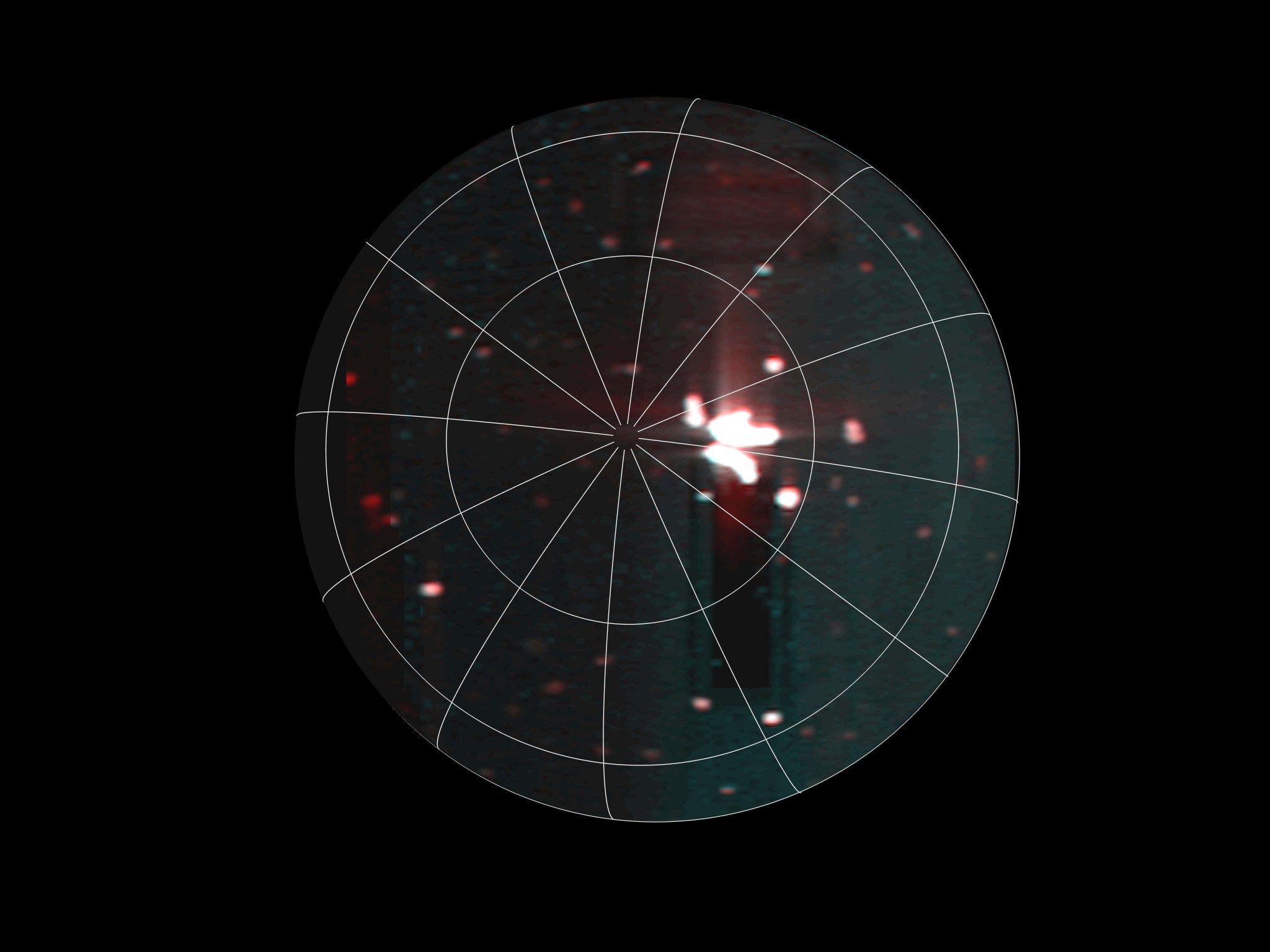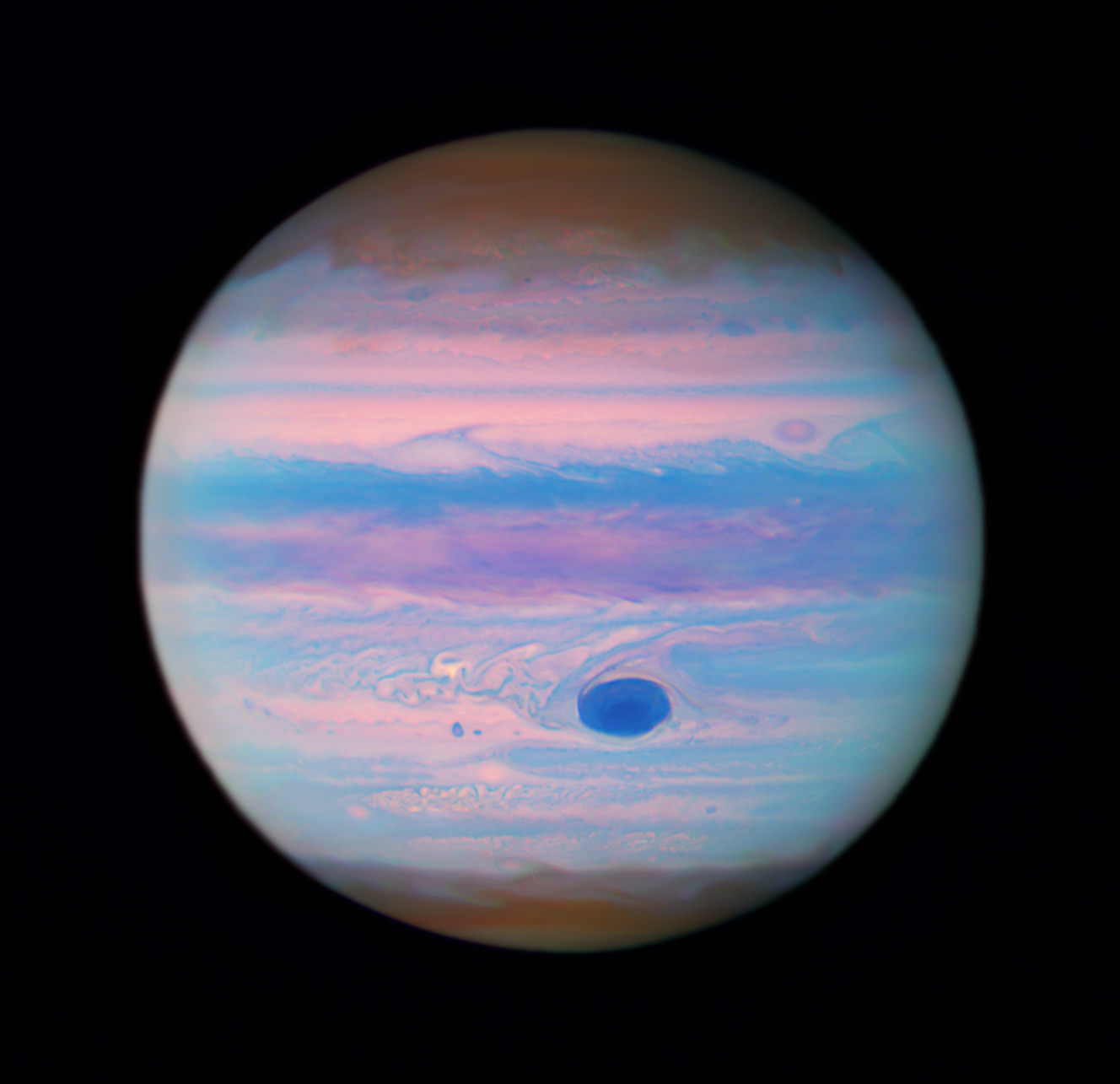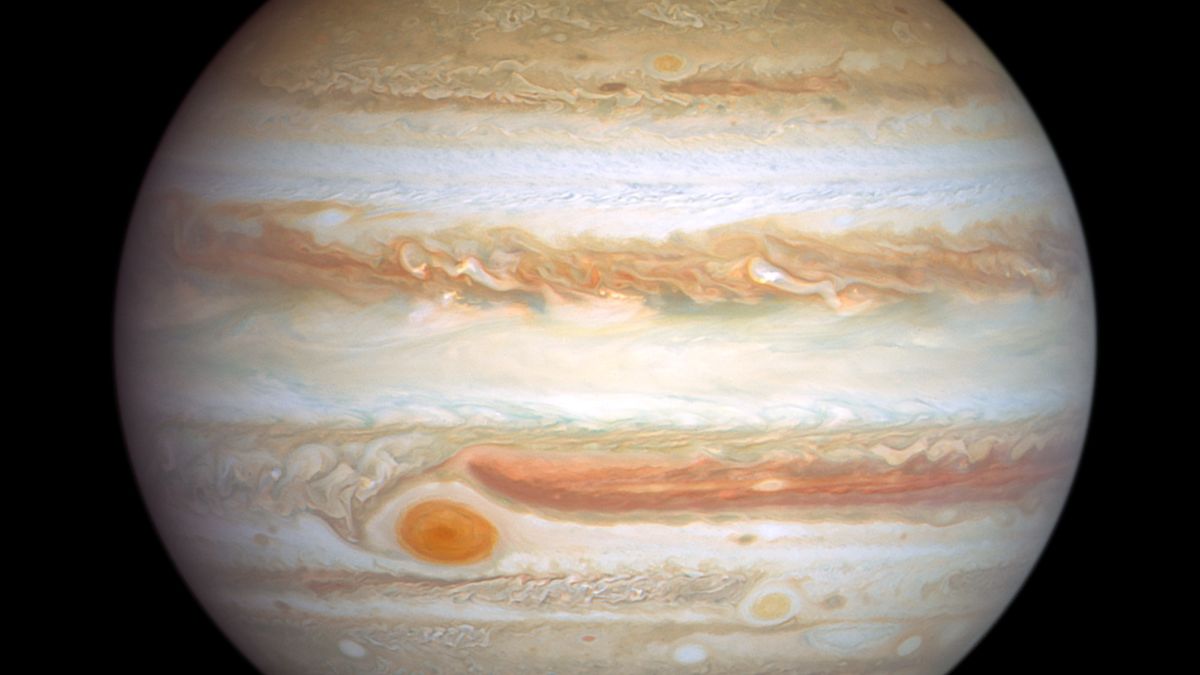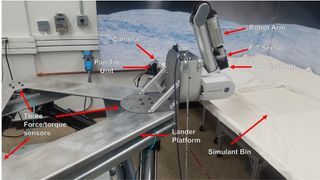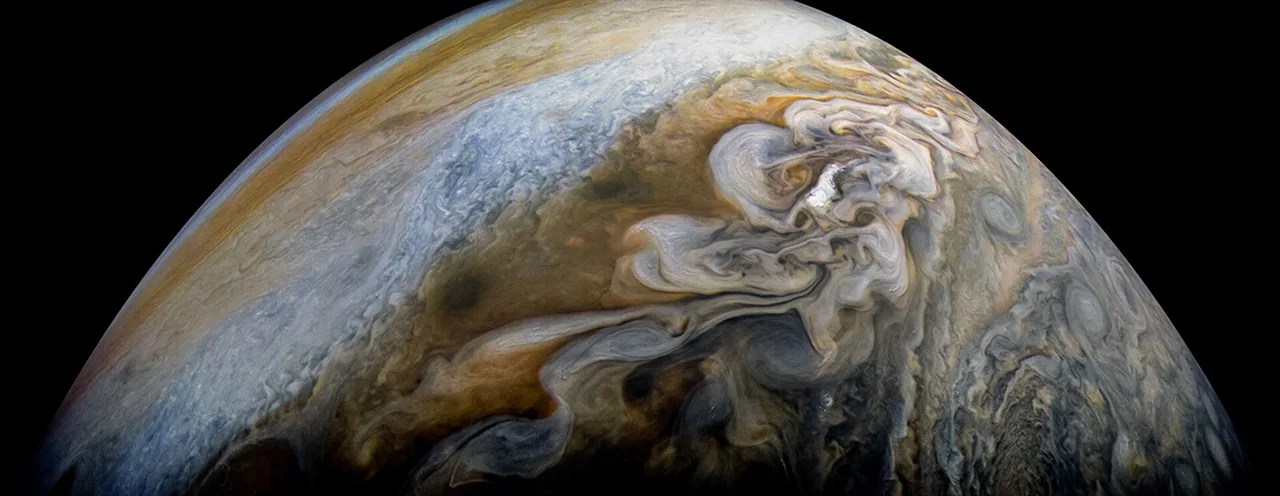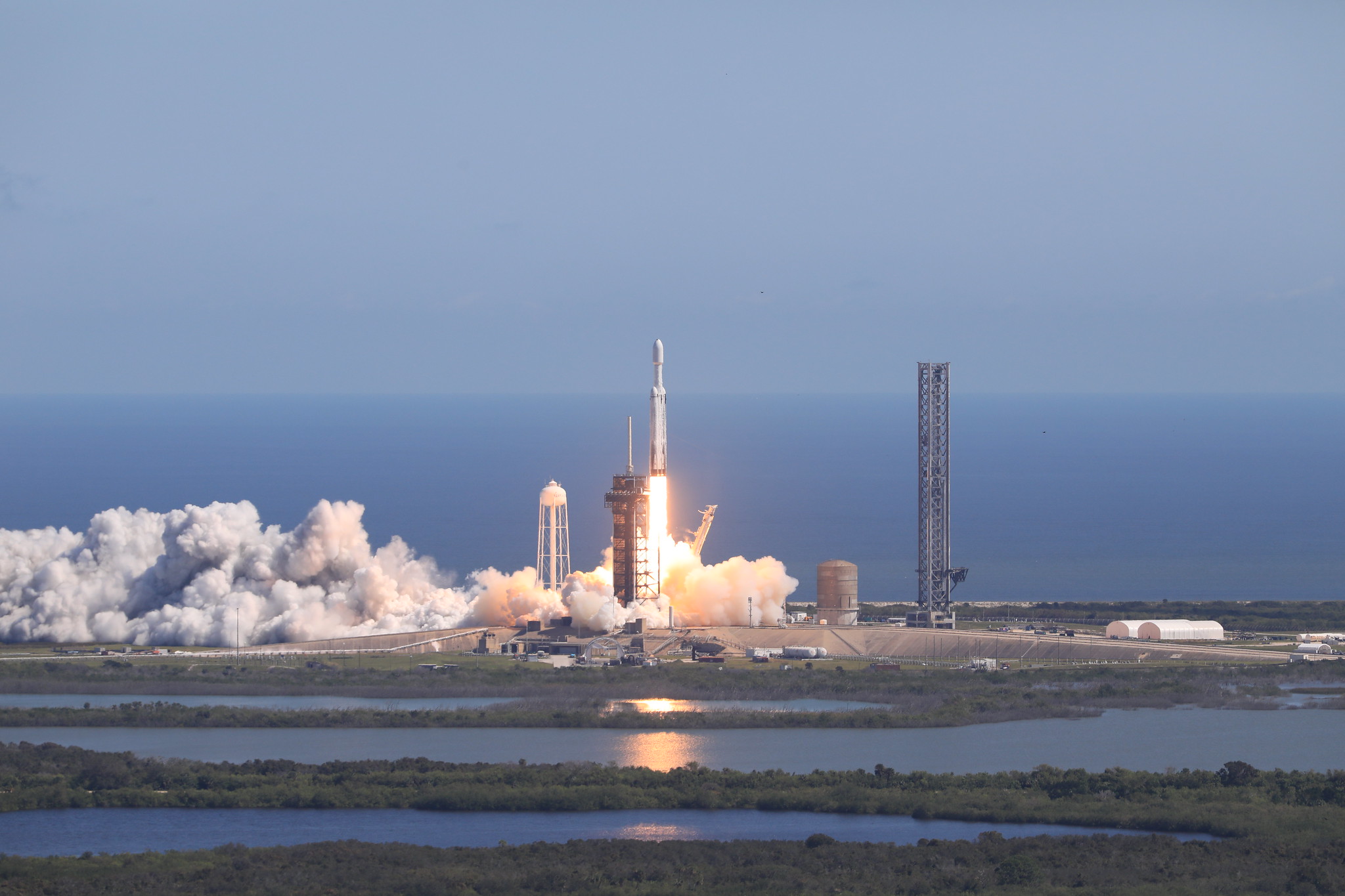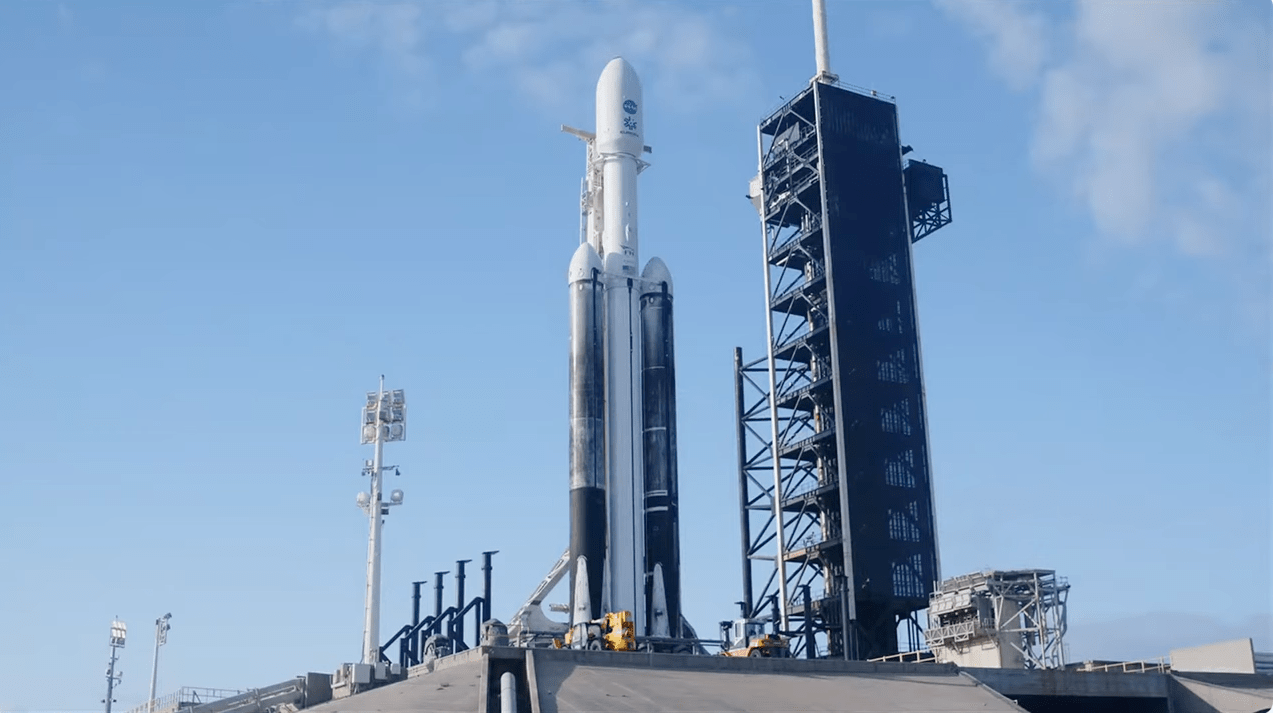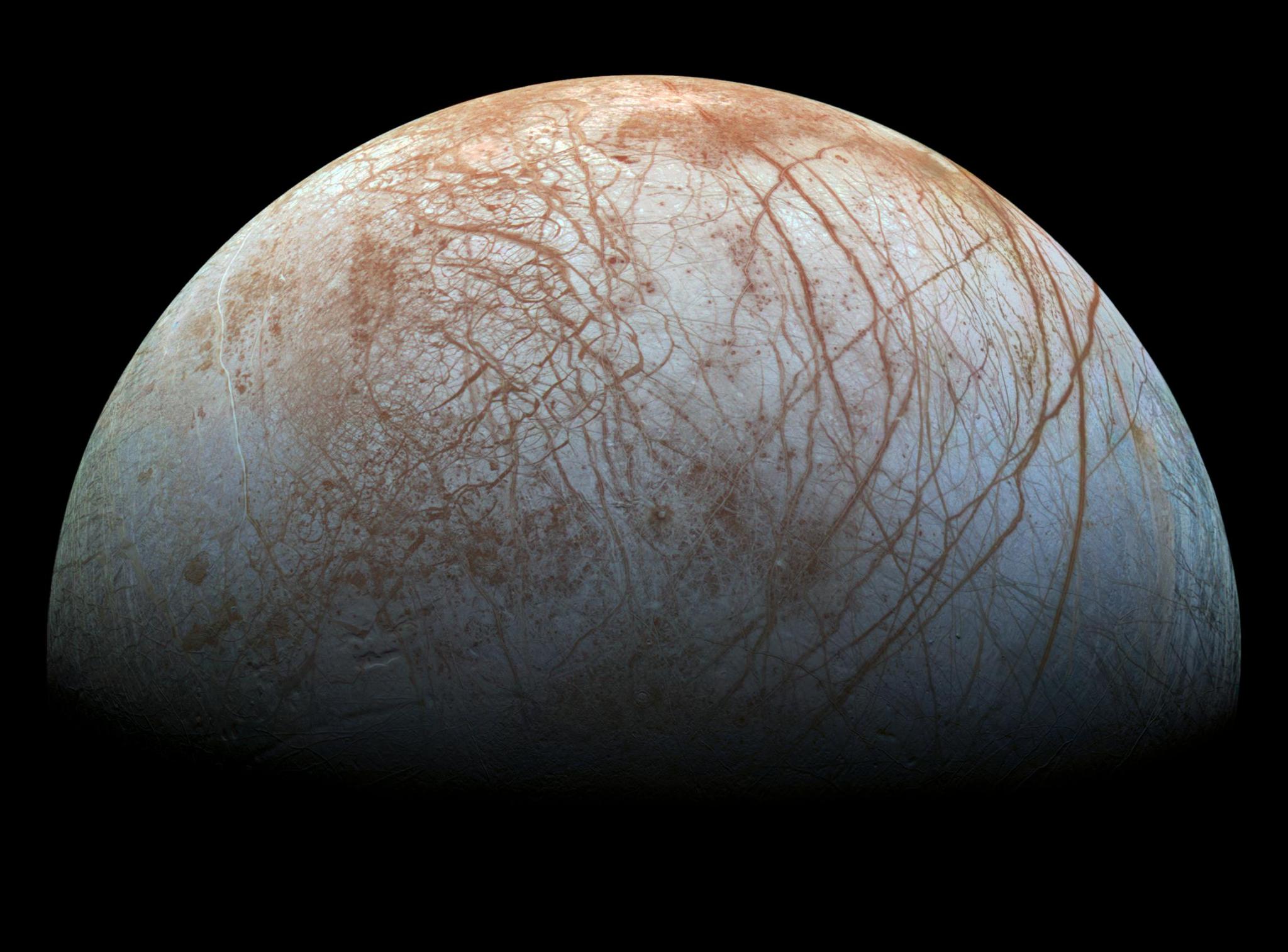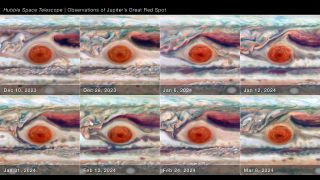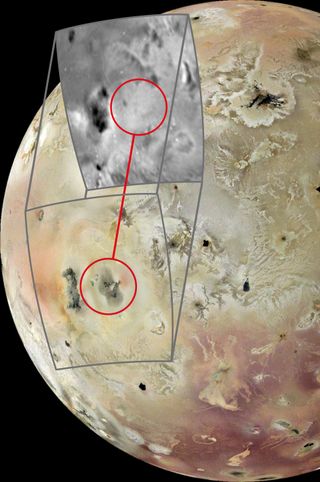5 min read Preparations for Next Moonwalk Simulations Underway (and Underwater) A massive hotspot — larger the Earth’s Lake Superior — can be seen just to the right of Io’s south pole in this annotated image taken by the JIRAM infrared imager aboard NASA’s Juno on Dec. 27, 2024, during the spacecraft’s flyby of the Jovian moon. NASA/JPL-Caltech/SwRI/ASI/INAF/JIRAM Even by the standards of Io, the most volcanic celestial body in the solar system, recent events observed on the Jovian moon are extreme. Scientists with NASA’s Juno mission have discovered a…
Read MoreTag: Jupiter
Hubble Reveals Jupiter in Ultraviolet Light
NASA, ESA, and M. Wong (University of California – Berkeley); Processing: Gladys Kober (NASA/Catholic University of America) This NASA Hubble Space Telescope image shows the planet Jupiter in a color composite of ultraviolet wavelengths. Released on Nov. 3, 2023, in honor of Jupiter reaching opposition, which occurs when the planet and the Sun are in opposite sides of the sky, this view of the gas giant planet includes the iconic, massive storm called the “Great Red Spot.” Though the storm appears red to the human eye, in this ultraviolet image it appears…
Read MoreAn amateur astronomer used an old technique to study Jupiter — and found something strange
Scientists and amateur astronomers have teamed up to upend a long-held assumption that Jupiter’s iconic swirling clouds are made of frozen ammonia — a pretty foundational revelation about the gas giant we thought we knew well. Using commercially available telescopes and spectral filters, an amateur astronomer named Steve Hill collected data to map the abundance of ammonia in Jupiter‘s atmosphere, but Hill ultimately found something that contradicted previous models of the gas giant’s atmospheric composition to begin with. “I was intrigued!” Patrick Irwin from the University of Oxford told Space.com.…
Read MoreNASA tests high-tech software for future mission to search for life on Jupiter’s moon Europa
Artificial intelligence is being developed to provide a robotic brain for a future NASA mission to land on the icy surface of one of the solar system’s ocean moons, such as Europa or Enceladus. The autonomous software is being developed by teams of researchers who are making use of a robotic arm, mimicking that belonging to a lander or rover, and a virtual reality simulation at NASA’s Jet Propulsion Laboratory (JPL) and Ames Research Center, respectively. Imagine that you’re a robotic lander designed to study Jupiter‘s moon Europa, which hosts…
Read MoreDecember’s Night Sky Notes: Spot the King of Planets
4 min read December’s Night Sky Notes: Spot the King of Planets by Kat Troche of the Astronomical Society of the Pacific Jupiter is our solar system’s undisputed king of the planets! Jupiter is bright and easy to spot from our vantage point on Earth, helped by its massive size and banded, reflective cloud tops. Jupiter even possesses moons the size of planets: Ganymede, its largest, is bigger than the planet Mercury. What’s more, you can easily observe Jupiter and its moons with a modest instrument, just like Galileo did…
Read MoreLiftoff! NASA’s Europa Clipper Sails Toward Ocean Moon of Jupiter
A SpaceX Falcon Heavy rocket carrying NASA’s Europa Clipper spacecraft lifts off from Launch Complex 39A at NASA’s Kennedy Space Center in Florida at 12:06 p.m. EDT on Monday, Oct. 14, 2024. After launch, the spacecraft plans to fly by Mars in February 2025, then back by Earth in December 2026, using the gravity of each planet to increase its momentum. With help of these “gravity assists,” Europa Clipper will achieve the velocity needed to reach Jupiter in April 2030. Credit: NASA/Kim Shiflett NASA’s Europa Clipper has embarked on its…
Read MoreJourney to a Water World: NASA’s Europa Clipper Is Ready to Launch
5 min read Preparations for Next Moonwalk Simulations Underway (and Underwater) A SpaceX Falcon Heavy rocket with the Europa Clipper spacecraft aboard is seen at Launch Complex 39A as preparations continue for the mission, Sunday, Oct. 13, at NASA’s Kennedy Space Center in Florida. NASA Find details about the launch sequences for the orbiter, which is targeting an Oct. 14 liftoff on its mission to search for ingredients of life at Jupiter’s moon Europa. In less than 24 hours, NASA’s Europa Clipper spacecraft is slated to launch from the agency’s…
Read MoreCan Life Exist on an Icy Moon? NASA’s Europa Clipper Aims to Find Out
6 min read Preparations for Next Moonwalk Simulations Underway (and Underwater) The puzzling surface of Jupiter’s icy moon Europa looms large in this reprocessed color view made from images taken by NASA’s Galileo spacecraft in the late 1990s. The images were assembled into a realistic color view of the surface that approximates how Europa would appear to the human eye. NASA/JPL-Caltech/SETI Institute With a spacecraft launching soon, the mission will try to answer the question of whether there are ingredients suitable for life in the ocean below Europa’s icy crust.…
Read MoreJupiter’s Great Red Spot is being squeezed, Hubble Telescope finds — and nobody knows why (video)
The venerable Hubble Space Telescope has watched Jupiter’s Great Red Spot (GRS) oscillating, as though it were being squeezed in and out roughly every 90 days. Why this huge anticyclone, which has been shrinking over the decades and currently measures about 9,165 miles (14,750 kilometers) across (although astrophotographer Damian Peach has reportedly measured it to be just 7,770 miles, or 12,500 km, wide), is behaving in such fashion is a mystery. “With Hubble’s high resolution, we can say that the GRS is definitely squeezing in and out at the same…
Read MoreNASA’s Juno probe spots massive new volcano on Jupiter moon Io
Researchers have spotted a huge new active volcano on Jupiter’s moon Io by comparing images taken by two NASA missions more than a quarter of a century apart. The images of the new volcano were taken by NASA’s Juno spacecraft and its JunoCam as it made a flyby of Io — the solar system’s most volcanic body — on Feb. 3 this year. The images were captured on the nightside of Io, illuminated only by reflected sunlight from Jupiter. Comparison with Galileo spacecraft imagery of the same area, just south…
Read More